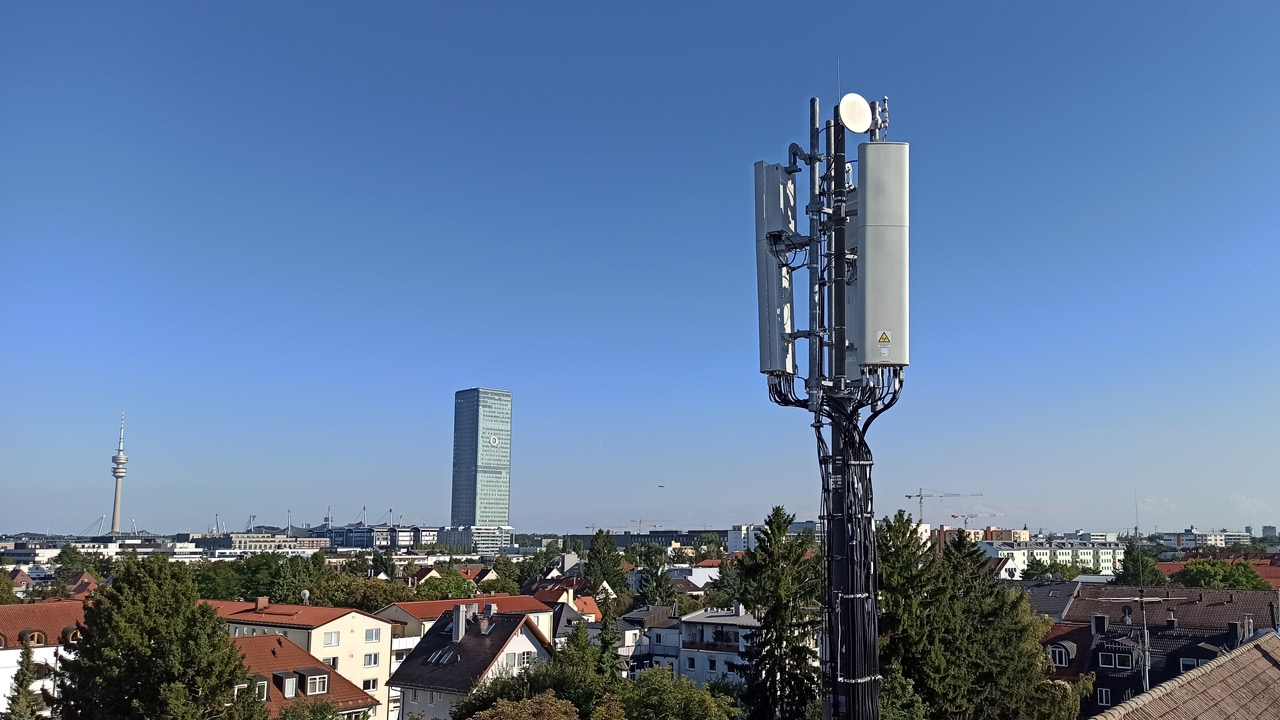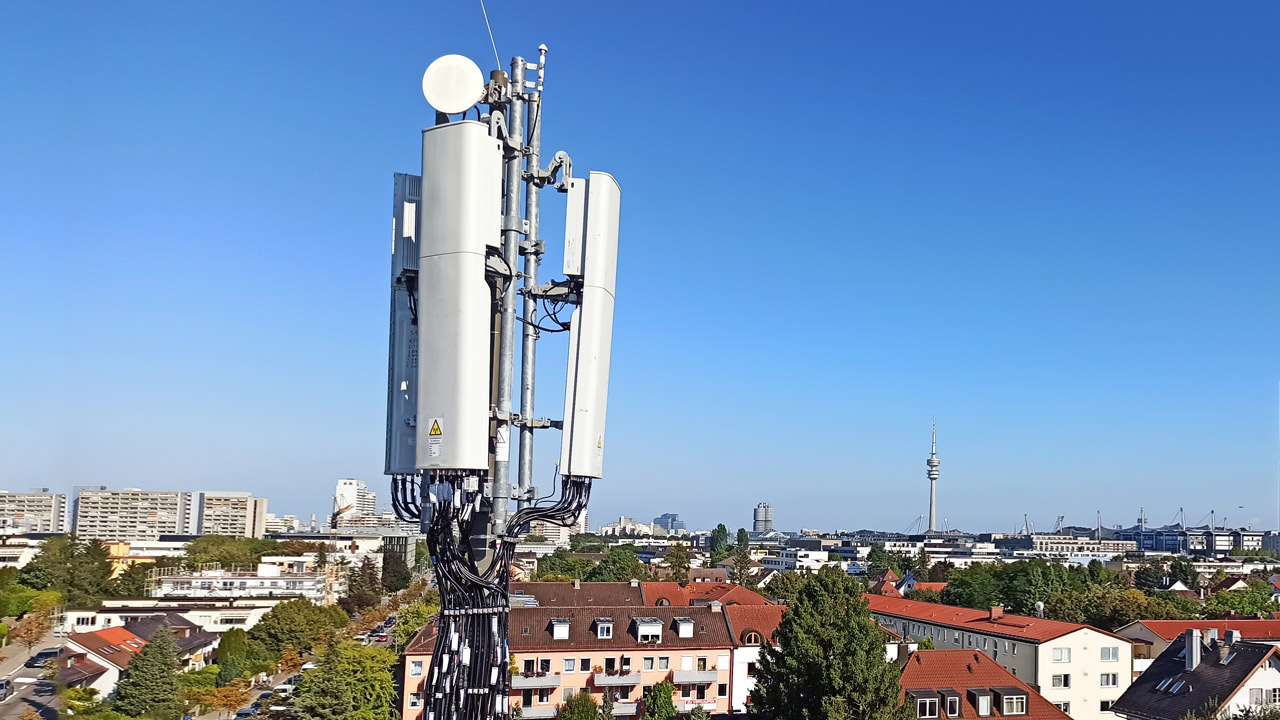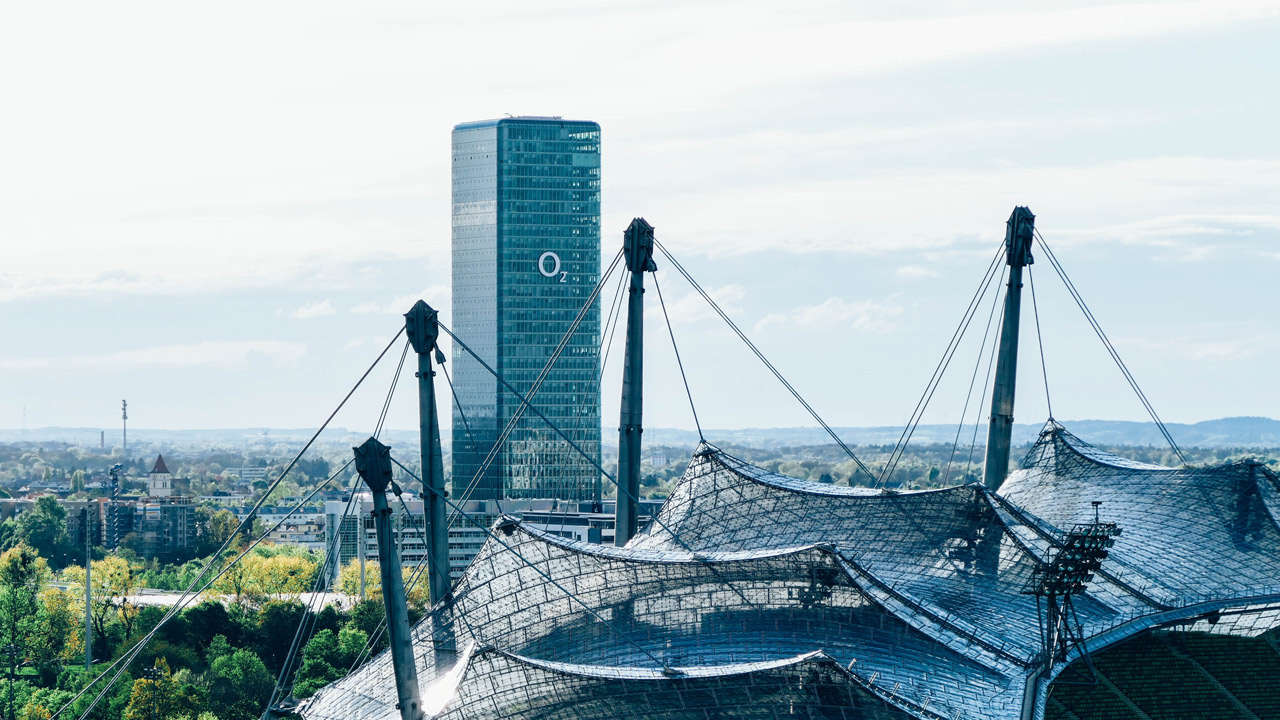26.10.2021
One antenna, all technologies:O2 uses new "all in one" antenna for 5G network

The new "all in one" mobile communications antenna supports all frequency bands and mobile communications standards.
For the first time, O2 is using an innovative "all in one" mobile communications antenna in its 5G network that supports all frequency bands and mobile communications standards. Currently, for example, network operators have to install additional 5G antennas to existing antenna systems on rooftops and cell towers for the 5G network rollout on 3.6 GHz. The new "all-in-one" antennas significantly simplify such upgrades and conversions of mobile network sites. They also reduce the space required as well as the overall weight of the setups and cut operating costs by around 30 percent. O2 is initially using the new "all in one" antennas from network equipment supplier Huawei as part of its 5G Tech City project in Munich.
The "all in one" antenna supports all frequency bands - from the long-range frequencies such as 700 MHz (5G), 800 MHz (4G), and 900 MHz (2G) to the particularly powerful 3.6 GHz frequencies that O2 currently uses primarily for its fast 5G network. It is also easier to combine the frequency bands so that O2 can offer even higher data rates for its 5G network in the future.
Powerful and energy-efficient networking between antenna and customer

For users, the technical equipment improves network reception, increases data rates and available capacity.
Inside the "all-in-one" antenna is a multi-antenna system with a mix of active and passive antennas. The passive antennas provide networking on the classic, lower 4G frequencies (800 MHz). The active antennas enable the modern Massive MIMO technology (Multiple Input, Multiple Output). They enable smartphone users to be even better networked by means of so-called beams. Instead of transmitting mobile signals in a circle over the entire area, beamforming technology establishes targeted, direct radio connections with users. It also improves range by around 40 percent.
As a unique technical innovation, the "all-in-one" antenna multiplies the number of these so-called beams. Previously, only four beams per direction were possible for separate transmission for medium 4G frequencies (1800-2600 MHz). With the "all-in-one" antenna, the number doubles to eight beams per direction. For the high 5G frequencies (3.6 GHz), there are even 32 beams per direction for separate transmission of a mobile signal between the antenna and the customer.
For users, the technical equipment improves network reception, increases data rates and available capacity. The new antenna technology is more energy efficient than conventional setups because it uses state-of-the-art technology components and transmits power to the customer's smartphone in a much more targeted manner. Huawei's "all-in-one" antennas are named "Blade AAU & Dual Band FDD 8T8R."
O2 drives forward further development and expansion of 5G technology
As part of the 5G Tech City Munich project Telefónica Deutschland / O2 has already been researching and testing the latest antenna solutions since 2016.
Telefónica Deutschland / O2 has already been researching and testing the latest antenna solutions together with Huawei since 2016 as part of the 5G Tech City Munich project. For this purpose, the company uses eight antenna sites in the north of Munich around the O2 Tower and the Olympic grounds.
O2 is also making great progress with the nationwide 5G network rollout. Currently, more than 3,000 5G antennas are already transmitting on the powerful 3.6 GHz frequency in over 100 German cities. O2 offers its customers a particularly powerful 5G network: only recently, the mobile communications analysis company Opensignal named O2's network the fastest 5G network in Germany on average in the category of download speeds. 1)
O2 has ambitious expansion plans to roll out 5G nationwide faster than any other mobile communications standard before: by 2022, the company already wants to cover 50 percent of the population with 5G, and by the end of 2025 the entire population.
| 1) | Opensignal Awards – Germany: 5G Experience Report August 2021 |
